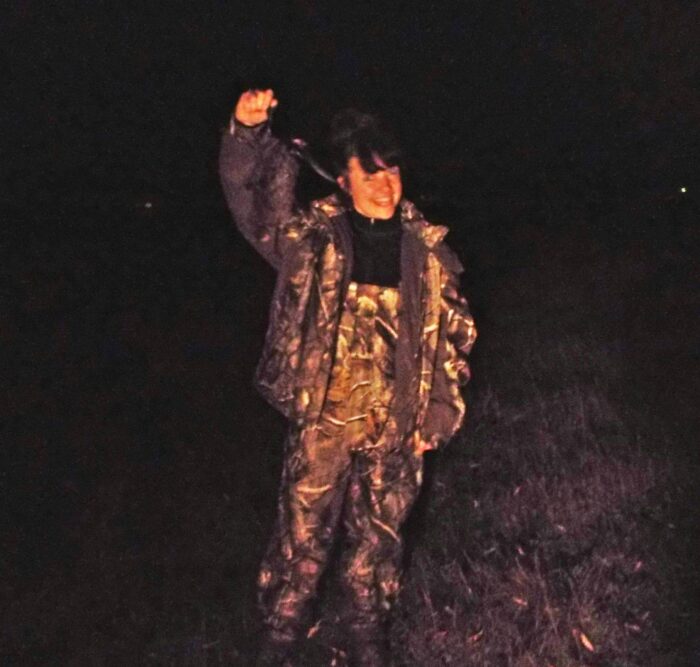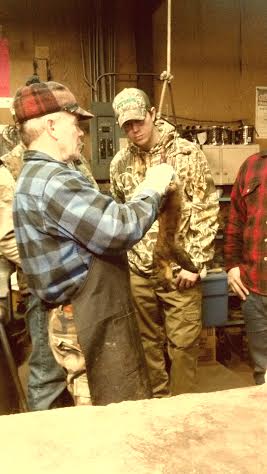
Checking homemade muskrat traps at night.
“All life depends upon other living organisms. We may decide, on a personal level, that we will no longer eat meat or wear fur, leather or woolens. However, innumerable insects and animals will still be affected by our need to protect and harvest vegetables and cereals. Meanwhile, land used to grow crops and build our roads and cities was once wildlife habitat.
Every plant and animal species has the potential to reproduce in numbers which would exceed what its environment can ultimately support. Man, presumably, has the same right as other species to make use of this natural surplus-so long as we protect habitat and manage wildlife populations responsibly.”
The above information was copied from the Montana Trappers Association website (montanatrappers.org).

MTA Fur Handling Clinic – January 2014
As a five year-old, trapping, to me, meant ridding our garage/shop of mice, using little wooden traps with metal springs or hanging sticky rolls of tape from ceiling to trap flies. And, in actuality, I can say that I was a successful trapper back then. I never thought that thirty years later, I would be successfully trapping again. The difference is that this time, I have a better understanding of the importance of what I am doing, and I now trap different animals, sometimes successfully and sometimes not, consisting of furbearers, predators and nuisance animals.
Education is vital when it comes to trapping, regardless of whether you trap or not. If you aren’t completely sure what is involved in trapping, then you should learn about it before you form an opinion about it. The Montana Trappers Association (MTA) devotes a huge amount of time teaching classes and speaking at seminars and mentoring at the MTA’s annual Youth Trapper Camp. The Montana Trappers Association is a great place to learn everything about trapping, from what types of animals are legal to trap in Montana to what types of traps to use to skinning techniques and fur sale information. The trapping instructors and volunteer trappers involved with the MTA are, by far, some of the all-around best people I have ever met, and they have been trapping for decades, and you can get a sense of their commitment to and passion for this time-honored means of wildlife conservation in Montana when you meet them.
I am proud to be a trapper and a member of the MTA. I recognize the importance of trapping as a management tool, and I will stand by trapping as much as I do hunting and fishing. You don’t have to be a trapper or a hunter to understand the importance of hunting and trapping, but if you have any questions about those topics, please reach out to actual trappers and hunters rather than people who know nothing about it or are against it based on what they THINK it is. I would not ask somebody who doesn’t like dogs and/or has never owned a dog (or been owned by a dog?) to give me information about dogs. So, ask a trapper if you have questions about trapping!
You are invited to attend the MTA Spring District 2 meeting, for all members of the Montana Trappers Association, at the FWP office at 3201 Spurgin Road in Missoula. Every meeting I attend, I learn something new. Purchase your membership today online at montanatrappers.org, and become a part of something awesome. Learn. Trap. Teach.